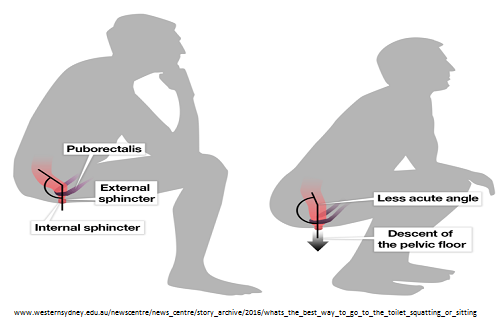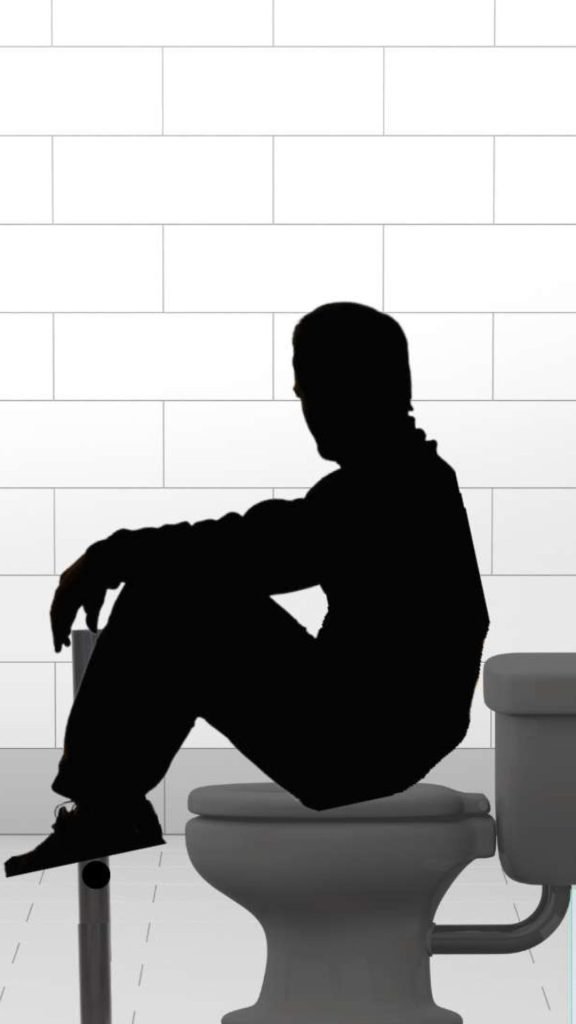Why Squatting Helps You Poop Better (Backed by Science!)
Table of Contents
TL;DR – Why Squatting Helps You Poop Better
Struggling with constipation or straining in the bathroom? The way you sit on the toilet might be the problem! Squatting for better pooping is a science-backed solution that aligns your colon for smooth, effortless elimination.
Key Takeaways:
✅ Sitting at a 90-degree angle creates a kink in your rectum, making pooping harder.
✅ Squatting at a 35-degree angle straightens the rectum, allowing for complete and strain-free elimination.
✅ Squatting reduces constipation, hemorrhoids, and colon-related issues while supporting overall gut health.
✅ Use The PoopSTICK or footstool to elevate your feet, lean forward, and improve your posture.
✅ Many cultures that squat to poop experience fewer digestive problems than those using seated toilets.
💡 Want to learn more? Read the full blog post for expert insights, scientific studies, and tips on making the transition. Your gut will thank you! 🚽✨
Have you ever found yourself struggling in the bathroom, pushing and straining with little success? You’re not alone. Millions of people experience constipation, hemorrhoids, and other digestive discomforts due to poor pooping posture. But what if there was a simple, natural solution?
Enter squatting—the way our bodies were designed to eliminate waste. While sitting on a toilet may be the norm in the modern world, it turns out that squatting is actually the optimal position for healthy, strain-free bowel movements. This isn’t just a trend; it’s backed by science.
In this deep dive, we’ll explore why squatting makes pooping easier, the health benefits it offers, and how you can incorporate it into your routine for better digestion and overall wellness. Get ready for a transformation in how you think about bathroom habits!
Key Takeaways
Squatting aligns the rectum for easier elimination.
Sitting can cause unnecessary strain and lead to constipation.
Scientific research supports squatting as a more effective way to poop.
Simple changes like using a footstool can improve your bathroom experience.

The Science of Pooping: How Your Body Works
Digestion is a complex process that starts the moment food enters your mouth and ends when waste exits your body. However, the final step—elimination—is heavily influenced by your posture.
The puborectalis muscle, a key player in bowel control, wraps around the rectum and helps maintain continence. When you sit on a toilet at a 90-degree angle, this muscle remains partially engaged, creating a kink in the rectum. This makes elimination more difficult and increases the need for straining.
On the other hand, when you squat at a 35-degree angle, the puborectalis muscle fully relaxes, allowing the rectum to straighten. This results in a smoother, more complete bowel movement with minimal effort.
Key Takeaways
The puborectalis muscle controls bowel movements.
Sitting creates a kink in the rectum, making pooping harder.
Squatting relaxes the muscle and straightens the rectum for easier elimination.
Squatting vs. Sitting: What’s the Difference?
The standard sitting position (90-degree angle) was introduced with the advent of modern plumbing, but it may not be the best for your body. Sitting keeps the rectum partially constricted, which can lead to incomplete elimination and increased strain.
Squatting, on the other hand, allows the rectum to open fully, reducing the effort required to poop. This natural posture mimics the way humans have eliminated waste for thousands of years. Many cultures that still use squat toilets report lower rates of constipation and digestive issues.
Key Takeaways
Sitting (90-degree angle) keeps the rectum partially closed.
Squatting (35-degree angle) allows for full rectal opening.
Cultures that squat to poop have fewer digestive problems.
Health Benefits of Squatting to Poop
Squatting isn’t just about comfort—it has numerous health benefits. Studies show that squatting can:
Reduce constipation and straining, leading to faster bowel movements.
Prevent hemorrhoids by minimizing pressure on rectal veins.
Lower the risk of colon-related diseases, such as diverticulitis.
Support pelvic floor health, which is crucial for both men and women.
Promote complete elimination, reducing the risk of toxin buildup in the colon.
When you squat, you optimize your body’s natural ability to pass stool, reducing stress on your digestive system.
Key Takeaways
Squatting helps prevent constipation and hemorrhoids.
It may reduce the risk of colon diseases.
Full elimination supports overall gut health.

How to Squat in a Modern Bathroom
You don’t need to install a squat toilet to reap the benefits of squatting. A simple footstool like The PoopSTICK can help mimic the squat position while using a standard toilet. Here’s how:
Place The PoopSTICK under your feet.
Position your knees higher than your hips.
Lean forward slightly to straighten your colon.
Relax your abdominal muscles and avoid excessive straining.
By adjusting your posture, you can experience a more natural and effective bowel movement.
Key Takeaways
Use The PoopSTICK to elevate your feet.
Keep your knees higher than your hips.
Lean forward slightly for better alignment.
Relax your muscles to avoid straining.

Making the Transition: Tips for Beginners
If you’re new to squatting, start by making gradual adjustments:
Use a footstool and experiment with different heights.
Practice deep breathing to relax your muscles.
Try different angles until you find what’s comfortable.
If possible, consider squat-friendly toilet designs.
It may take some time to get used to the new position, but your body will thank you in the long run.
Key Takeaways
Start with small adjustments, like a footstool.
Deep breathing helps relax your muscles.
Find the best angle for your comfort.
A Historical Perspective: The Evolution of Toileting Habits
For centuries, humans squatted to poop. Seated toilets became popular in the West due to plumbing advancements, but many cultures still use squat toilets today. Research suggests this shift may have contributed to an increase in digestive problems.
Scientific Studies That Support Squatting
Multiple studies confirm the benefits of squatting. Research shows that squatting reduces straining, speeds up elimination, and promotes colon health. Experts like gastroenterologists advocate for squatting as a more natural and effective way to poop.
Common Myths & Misconceptions About Squatting
Myth: Sitting is more hygienic than squatting.
Fact: Squatting reduces contact with contaminated surfaces.
Myth: Squatting is difficult and uncomfortable.
Fact: With practice, it becomes second nature.
Myth: Only people with digestive issues need to squat.
Fact: Squatting benefits everyone by promoting better digestion.
Key Takeaways
Western society transitioned to seated toilets relatively recently.
Research supports squatting for better digestion and colon health.
Common myths about squatting are often based on misconceptions.
Ready to revolutionize your bathroom experience?
Start by making small changes—grab The PoopSTICK, adjust your posture, and see the difference for yourself. Your digestive system will thank you!
Have you tried squatting to poop? Share your experience in the comments below, or tag a friend who needs to read this! Don’t forget to follow us for more gut health tips and wellness hacks. 🚀
Key Takeaways
Small changes can make a big difference.
Share your experiences to spread awareness.
Follow for more gut health tips!
Join our Email List
Past Blog Posts

Poop & Weight Loss/Gain: How Your Bowel Health Impacts Your Scale
Your scale isn’t measuring fat — it’s measuring what your gut hasn’t let go of. Hidden stool retention, slow motility, and gut bacteria can quietly drive weight gain and bloating, even when your diet is “perfect.” This post exposes the dirty secret behind stubborn weight… and how to fix it.

What Your Stool Color & Shape Reveal About Your Gut Health
Your poop is a real-time report card on your gut health—and most people are ignoring it. From color changes to weird shapes to the clues hidden in texture, every bowel movement tells a story. This guide breaks down exactly what your stool says about digestion, inflammation, and the hidden issues you can’t see.

Is Wheat Wrecking Your Gut? What Celiac Disease Reveals
Wheat isn’t the villain—it’s the kind of wheat that’s wrecking your gut. From ancient grains to modern hybrids, discover how today’s wheat triggers inflammation, worsens celiac symptoms, and sabotages digestion—and what smarter, safer alternatives can finally bring your gut back to balance.
